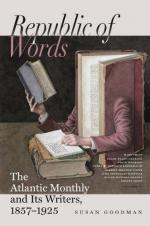While the professional reader will peruse this book with pleasure as well as profit, there are many points and paragraphs of great value to everybody. We advise every one to look over these pages, and we promise that many valuable hints will be gained in reference to the various ailments and casualties which are constantly befalling the eye. It is well in this world to become members of a Mutual-Assistance Society, and help one another out of trouble as often as we can. In order to do this, we must know how; and, in many cases, a little aid in mishaps such as are likely to occur to the eye may prevent a vast deal of subsequent injury and pain.
We cannot but refer to the singular good sense of the author in pressing upon his reader’s attention the mischief so often wrought, hitherto,—and we fear still frequently brought about,—by over-activity of treatment. Especially does this find its exemplification in the care of traumatic injuries of the eye. Rashness and heroic measures in these cases are as unfortunate for the patient as are the well-meant efforts of friends, when a foreign substance has been inserted into the ear or nose, or a needle broken off in the flesh: what was at first an easily remedied matter becomes exceedingly difficult, tedious, and painful, after various pokings, pushings, and squeezings.
The author’s experience in cases of cataract makes his observations upon that affection as valuable as they are clear and to the purpose. The same is true with regard to the use and abuse of spectacles.
A short account of that interesting and most important instrument, the Opthalmoscope, will command the attention of the general reader.
Finally, we notice with peculiar satisfaction the elegant dress in which the volume appears. A very marked feature of this is the agreeable tint given to the paper, so much to be preferred to the glaring snowy white which has been so long the rule with publishers everywhere. This is especially befitting a volume whose object is the alleviation of ocular distress, and we venture to say will meet with the commendation of every reader. A similar shade was adopted, some time since, by the publishers of “The Ophthalmic Hospital Reports,” London, at the suggestion, we think, of its accomplished editor, Mr. Streatfeild.
Country Living and Country Thinking. By GAIL HAMILTON. Boston: Ticknor & Fields. 12mo.
Our impression of this volume is that it contains some of the most charming essays in American literature. The authoress, who chooses to conceal her real name under the alias of “Gail Hamilton,” is not only womanly, but a palpable individual among women. Both sex and individuality are impressed on every page.




